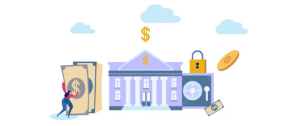Understanding the ins and outs of bank fees is essential to managing your finances in the United States. Bank fees, such as withdrawal and transfer charges, can significantly impact your account balance if you’re not careful. By familiarizing yourself with these common costs, you can avoid unexpected deductions and maintain better control over your money.
Many banks impose fees for different services, including withdrawing money from ATMs, transferring funds between accounts, or even maintaining certain account types. Awareness of these potential charges is crucial, especially if you frequently perform these transactions. Let’s dive deeper into the types of fees you might encounter and how you can minimize them.
Common types of banking charges

When banking in the USA, you may come across various charges imposed by financial institutions. These fees vary based on the type of transaction and the bank’s policies. Understanding each type can help you make informed decisions about your account activities.
Withdrawal fees are common, especially when using an ATM outside your bank’s network. Typically, you’re charged a fee both by your bank and the ATM owner. Additionally, some banks charge for excessive withdrawals from savings accounts, as this is regulated by federal law to limit transaction frequency.
Transfer fees are another area where charges can accumulate. These costs can apply when moving money between accounts, both within the same bank and to accounts at different institutions. Wire transfers, in particular, often come with high costs, especially for international transactions.
ATM fees
ATM surcharges can quickly add up if you often withdraw cash from machines not affiliated with your bank. These surcharges typically range from $1.50 to $3.50 per transaction. The ATM operator might impose an additional fee, which is separate from your bank’s charges.
To avoid these fees, try to use in-network ATMs whenever possible. Most banks provide a tool on their website or mobile app to locate nearby ATMs that are free to use. Some banks also offer partnerships with retail chains, providing fee-free withdrawals at their locations.
Another strategy is to take advantage of cashback options when making purchases at grocery or convenience stores. This allows you to withdraw small amounts without incurring additional costs. Always check your bank’s policies and any alerts regarding ATM fees to stay informed.
Transfer costs
Transferring funds between accounts can also incur charges, varying by bank and transaction type. Internal transfers within the same bank are often free, but external transfers to another institution usually have a fee. This can range from a few dollars for standard transfers to up to $50 for international wires.
Automatic transfers, such as those for loan payments or savings plans, might come with lower or waived fees. It’s essential to understand your bank’s policies on these transactions to avoid unnecessary costs. Check if your bank offers fee-free days or promotional periods for transfers.
Using online banking platforms or mobile apps can help you monitor your transfer activity and associated fees. If you frequently need to move large sums, consider banks that offer low-cost or complimentary transfer options. Always compare these features when choosing your financial institution.
How to reduce banking fees
Reducing the financial burden of bank charges requires strategic planning and mindful financial behavior. By taking proactive steps, you can minimize and even eliminate some of these costs. Here are some practical tips to help you get started.
Firstly, always be aware of your bank’s fee schedule. Many banks provide detailed lists of their charges on their websites or in physical brochures. Take the time to review these documents to understand what activities incur fees and how you can avoid them.
Consider utilizing account features such as overdraft protection or maintaining minimum balances to waive certain fees. These features are designed to help customers avoid charges and can be beneficial if managed correctly. Opting for accounts geared towards students or seniors can also provide fee reductions or exemptions.
Leverage technology
Technology can be your ally in avoiding unnecessary bank costs. Mobile banking apps and online platforms offer tools to track your spending and alert you to potential fees. Many apps allow you to set notifications for low balances, pending transactions, or potential overdrafts.
Using automatic bill payments and direct deposits can help you avoid late fees and streamline your financial management. By aligning these payments with your billing cycle, you can ensure timely payments and maintain a good standing with your bank.
Reviewing your bank statements regularly using these platforms can help you stay on top of fees and catch any errors early. If you spot any inaccuracies, contact your bank immediately to resolve the issue and recoup any wrongfully charged fees.
